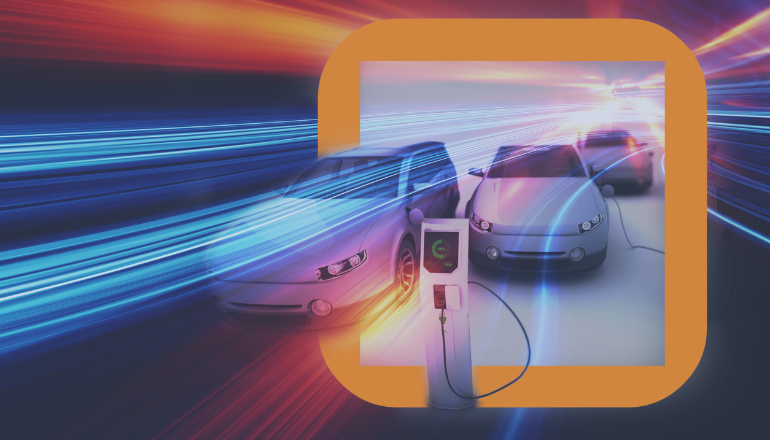Sure there have been a few electric vehicle (EV) recalls in recent months, but don’t let the media hype fool you, the EV market is only going to keep on growing. 2019 saw record sales of 2.1 million electric vehicles, accounting for 2.6% of all global car sales that year, an increase of 40% from the prior year.
Despite predictions that the Covid-19 pandemic would cause a huge decrease in EV sales during 2020, the year actually ended on a positive note. In Europe, EV sales more than doubled and in the USA, EV sales were 4% higher than they were in 2019, despite the overall automobile market shrinking by 15%.
Consumers are drawn to EVs by their environmental-friendliness as well as local price incentives in some markets. The EU is aiming to have 30 million EVs on the roads by 2030, and US President Biden recently introduced a plan that includes $174 billion in spending to encourage Americans to switch to EVs. As EVs are not reliant on fuel or gas, they are not susceptible to pipeline attacks, such as the recent Colonial Pipeline attack.
Given this reality, automakers need to make sure they are ready to shift production to EV ranges. Here’s a rundown on some of the key challenges to look out for.
Hardware Challenges in EV Adoption
EV technology is much more streamlined than the systems used in fuel-powered cars.They are not burdened by clunky legacy systems and their newly developed electronic-based components require less maintenance than traditional vehicles. In order to build cars to these new specs, automakers have to incorporate an entirely new architecture.
Automakers are facing three main hardware-related challenges:
- Semiconductor shortage: the entire automotive industry ground to a near halt in early 2021 due to a massive semiconductor shortage. The shortage was caused by poor-planning due to the Covid-19 pandemic and the mistaken assumption that demand for new cars would drop substantially. When the market ramped back up much quicker than anticipated, automakers were left without a steady supply of semiconductors. This is a huge problem for the makers of EVs which require over 100 semiconductors.
- Charging infrastructure: just as regular cars can’t run without gas, EVs can’t run without a charge. While some EVs can be charged at home drawing on the driver’s home power source, these chargers are very slow and do not provide a large range. As EVs become ever more popular, infiltrating the population of middle and lower income drivers who live in apartments or other areas without space for personal charging stations. EV drivers are dependent on a reliable charging infrastructure that will ensure that they will never be too far from a public charging station that they can use securely.
- Range (battery technology): the limited range that EVs can drive on one charge is the biggest factor that prevents drivers from making a purchase. According to one study, EVs need a 400-mile range battery in order for most consumers to consider buying. It’s not simply the battery itself that determines how far the car can drive on one charge, as an EV can also be influenced by extreme weather conditions or other factors.
A transition to a Zonal E/E Architecture will help keep OEMs ahead of all these hardware challenges by reducing the number of components in each vehicle.
Developing on the Run
In February 2021, Hyundai announced one of the most costly automotive recalls due to defects in the battery manufacturing process in three of their EVs. And they were not alone. NIO, General Motors and Tesla all had recalls of their own as well. This spate of recalls is due to the fact that OEMs are rushing to produce EVs to keep up with increased demand. They do not have the luxury of a full development process to ensure maximum performance of the new technologies. Instead, the short development cycles are resulting in increased defects and recalls.
OEMs need to have the latest technology and while they are investing in increased talent, they are not yet at the same level as technology-focused Fabless OEMs.
Cybersecurity
EV technology by definition makes an EV into a connected vehicle. A connected vehicle is open to the same security risks as a mobile phone or a corporate network. Every time a driver connects the vehicle to a public charging station, for example, it’s open to attack. In the most extreme cases, hackers can completely take over an EV system and hijack the car and its occupants.
EVs must be secure by design, with security features embedded in their core systems the moment they come off the assembly line.
The Future is Here
More and more automakers - from the economic to the luxury - are increasing their production of EVs with some, like GM, committing to producing only electric cars by 2040. The best way to ensure that this huge number of future EVs will not be plagued by defects and expensive recalls is for OEMs to partner with Cybertech Tier suppliers from the outset. Taking advantage of the deep experience that the Cybertech Tier has in working with technological advances will give OEMs the ability to provide their customers with cutting-edge EVs that also offer full safety and security.
Not only will the addition of new technologies improve the driver experience itself, but it will also impact the relationship between customers, manufacturers and dealerships. The car will be able to report to the dealership when it’s due for maintenance and the driver will be informed as well, keeping everyone in the same loop. Metrics and other relevant predictive maintenance information can also be sent directly to manufacturers ensuring that they can provide better service and improve on the next generation of vehicles.
New and improved technology is really what defines the cars of the future. It’s not realistic for OEMs to completely reinvent themselves as technology companies when their true expertise lies in years of experience in building cars. Combining forces with the Cybertech Tier, however, will give OEMs the boost they need to stay ahead in the changing market.






